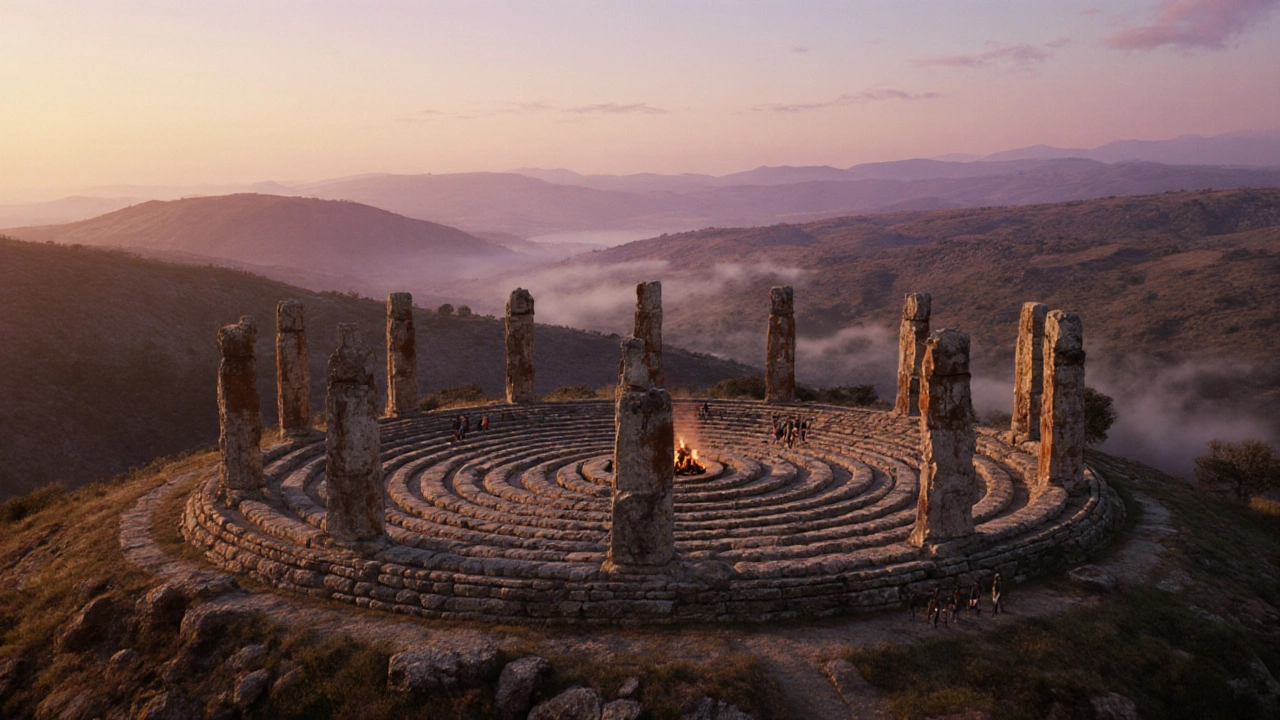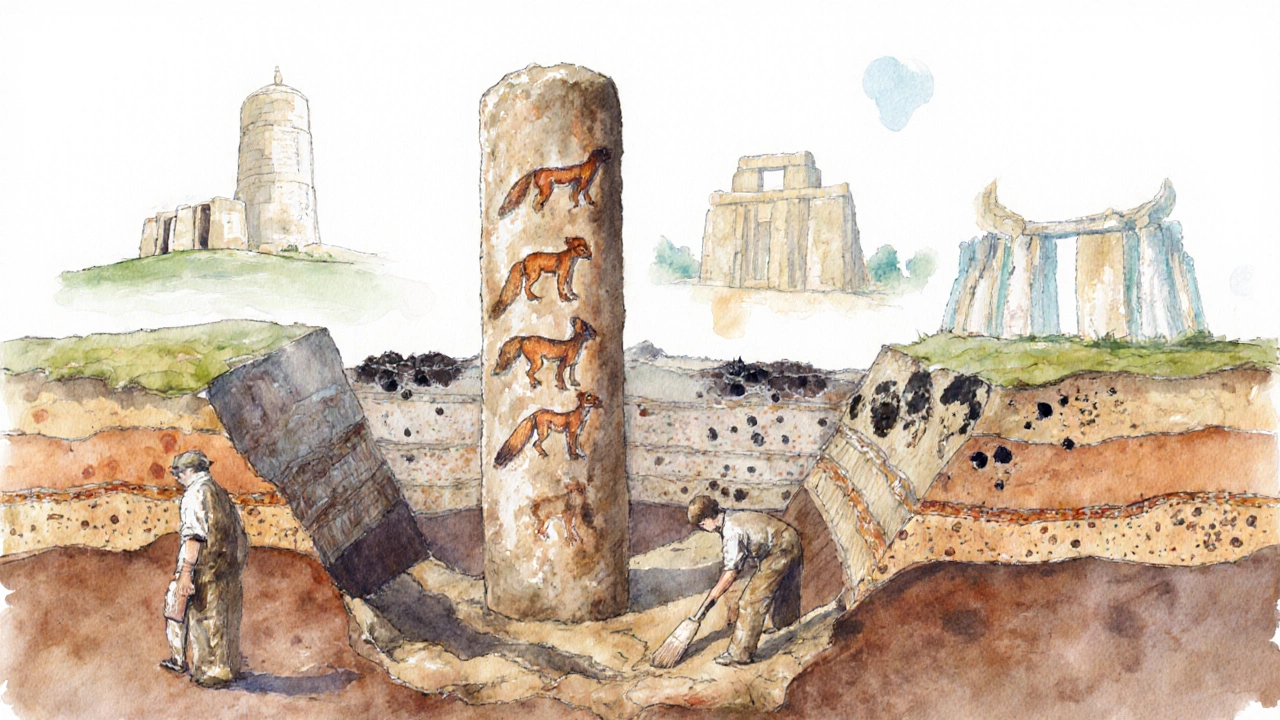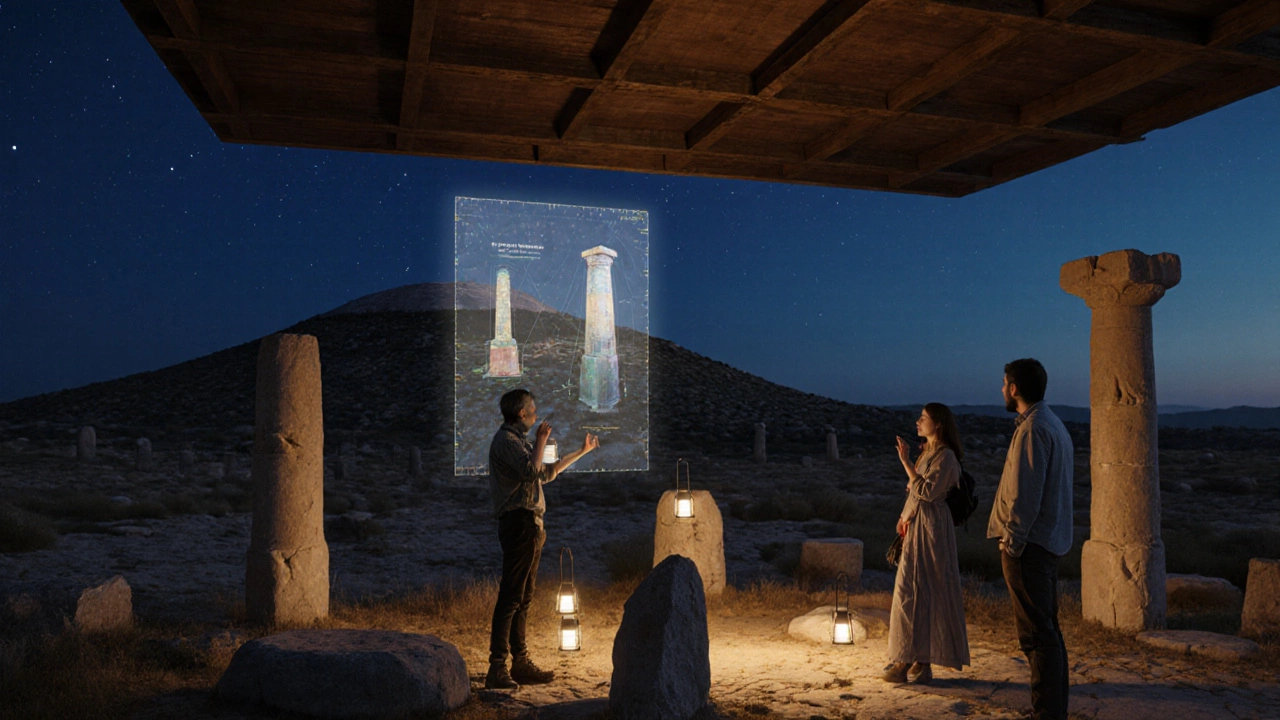World's Oldest Temple: Göbekli Tepe Explained
 Oct, 2 2025
Oct, 2 2025
Göbekli Tepe Timeline & Comparison Tool
Göbekli Tepe Facts
- Age: ~9600 BCE
- Location: Southeastern Turkey
- Features: Stone circles, T-shaped pillars
- Significance: Oldest known temple
Comparison Overview
Compare Göbekli Tepe with other ancient sacred sites to understand its unique place in history.
Timeline of Göbekli Tepe
Key Insights About Göbekli Tepe
- Pre-agricultural construction: Built by hunter-gatherers, predating agriculture
- Social organization: Required coordinated effort to move 10-ton pillars
- Symbolic meaning: Carved animals suggest shared mythology
- Ritual practices: Evidence of communal feasting and ceremonies
- Archaeological significance: Challenges assumptions about early civilization
When you picture a temple, you probably imagine towering columns, marble statues, and incense‑filled halls. But the world’s first sanctuary looks nothing like that. Nestled on a rugged hill in southeastern Turkey, Göbekli Tepe is a prehistoric stone complex dating back to the 10th millenniumBCE, predating Stonehenge by 6,000 years. Archaeologists now agree it is the oldest temple ever discovered, reshaping our view of early human society.
Quick Takeaways
- Göbekli Tepe dates to ~9600BCE, making it the oldest known place of worship.
- It consists of massive circular stone enclosures with T‑shaped pillars.
- The site was intentionally buried around 8000BCE, preserving its carvings.
- It predates agriculture, suggesting hunter‑gatherers built monumental architecture.
- UNESCO listed Göbekli Tepe as a World Heritage Site in 2018.
What makes Göbekli Tepe a temple?
Unlike later religious structures built for regular worship, Göbekli Tepe’s purpose is inferred from three clues:
- Ritual layout: The circular enclosures (called ‘temenos’) contain stone pillars arranged in a concentric pattern, a common design for sacred spaces.
- Rich iconography: Pillars are carved with abstract symbols, hunting scenes, and animal reliefs, hinting at mythic storytelling.
- Deliberate burial: Around 8000BCE the entire complex was covered with earth, a ritual act seen in later temple traditions.
These features align with how scholars define a temple: a built environment dedicated to communal ritual, not just a shelter.
How do we know it’s that old?
Dating a stone monument that has no organic material is tricky. Archaeologists used a mix of methods:
- Radiocarbon dating: Charcoal from fire pits and animal bones found in the surrounding layers yielded dates between 9600-8200BCE.
- Stratigraphic analysis: Soil layers above the pillars contain later Neolithic pottery, confirming the burial occurred after the initial construction.
- Optically stimulated luminescence (OSL): This technique measured the last time the burial sediments were exposed to sunlight, corroborating the 8000BCE burial estimate.
When you combine these data points, the timeline becomes remarkably tight, giving confidence that Göbekli Tepe is indeed the oldest known temple.

Other contenders for “oldest temple”
Göbekli Tepe isn’t the only ancient sacred site, but it outranks the rest in age and complexity. Below is a quick comparison.
| Site | Location | Construction Date | Main Features |
|---|---|---|---|
| Göbekli Tepe | Southeastern Turkey (Anatolia) | ~9600BCE | Stone circles, T‑shaped pillars, elaborate animal carvings |
| Jericho | West Bank, Palestine | ~8000BCE (Pre‑pottery Neolithic A) | Stone tower, early mud‑brick walls, possible cultic platform |
| Ġgantija | Gozo, Malta | ~3600BCE | Templar‑style megalithic temples, altars, stone slabs |
| Maltese Temples | Malta (multiple sites) | ~3500‑2500BCE | Complexes of semi‑circular chambers, carved pillars |
| Stonehenge | Wiltshire, England | ~2600BCE (main phase) | Massive sarsen stones, lintels, astronomical alignments |
All those sites are impressive, but none predate Göbekli Tepe by more than a few thousand years. Jericho, often cited for its ancient tower, still post‑dates Göbekli Tepe by at least a millennium.
What does Göbekli Tepe tell us about prehistoric people?
For decades, scholars believed that large‑scale construction required settled agriculture. Göbekli Tepe flips that narrative. Here’s what we’ve learned:
- Social collaboration: Moving and erecting 10‑ton limestone pillars demanded coordinated labor, suggesting organized groups.
- Symbolic thought: The recurring animal motifs imply a shared mythology or cosmology.
- Feasting culture: Thousands of animal bones hint at communal meals tied to ritual activity.
- Proto‑urbanism: The site acted as a regional gathering point, possibly the world’s first “pilgrimage” destination.
These insights influence how we view the Neolithic Revolution-not as a sudden shift, but as a gradual process sparked by shared belief systems.
Visiting Göbekli Tepe today
If you’re planning a trip, here’s what you need to know:
- How to get there: Fly into Şanlıurfa Airport (≈30km away) and take a local taxi or join a guided tour.
- Opening hours: Open daily 8am-7pm (closed on major Turkish holidays).
- Tickets: Standard admission is 100TRY for adults; students and seniors get a 50% discount.
- Best time to visit: Early spring (April-May) or late autumn (October) offer mild weather and fewer crowds.
- Guides: Certified guides (often archaeologists) provide insight into the ongoing excavations.
Remember to bring comfortable walking shoes and a hat - the hill is exposed and can get windy.
Preservation challenges and future research
Göbekli Tepe sits in a seismic zone, and the stone pillars are vulnerable to weathering. Conservation teams employ:
- Protective shelters: Temporary wooden canopies prevent rain erosion.
- Digital documentation: 3‑D laser scanning creates virtual models for study and backup.
- Community involvement: Local villagers receive training to monitor the site, aligning heritage protection with livelihoods.
Future research aims to answer lingering questions: What language did the builders speak? Were the carvings a form of early writing? Ongoing DNA analysis of animal bones may reveal diet patterns linked to ritual feasting.

Frequently Asked Questions
Why is Göbekli Tepe considered a temple and not just a settlement?
The layout of concentric stone circles, the abundance of ritual carvings, and the intentional burial of the entire complex all point to a purpose centered on communal worship and ceremonial activities, which are hallmarks of a temple.
How old is Göbekli Tepe compared to Stonehenge?
Göbekli Tepe dates to about 9600BCE, whereas the main phase of Stonehenge began around 2600BCE. That makes Göbekli Tepe roughly 7,000 years older.
Can you see the original color of the pillars?
The limestone originally had a light beige hue, but centuries of exposure have darkened the surface. Some sections still show faint traces of ochre pigment, hinting at ancient paint.
Is it safe to visit the site after recent earthquakes?
Local authorities inspect the pillars after each seismic event. So far, no structural damage has been reported, and the site remains open to visitors.
What other UNESCO sites are related to early human worship?
Sites such as Jericho, Ġgantija and the Maltese Temples are also UNESCO‑listed for their prehistoric religious significance.
Whether you’re an archaeology buff, a cultural traveler, or just curious about humanity’s earliest expressions of faith, Göbekli Tepe offers a rare glimpse into a world before cities, before writing, and before the societies we recognize today. Its stone circles stand as a reminder that the desire to gather, to celebrate, and to contemplate the divine is as ancient as humanity itself.